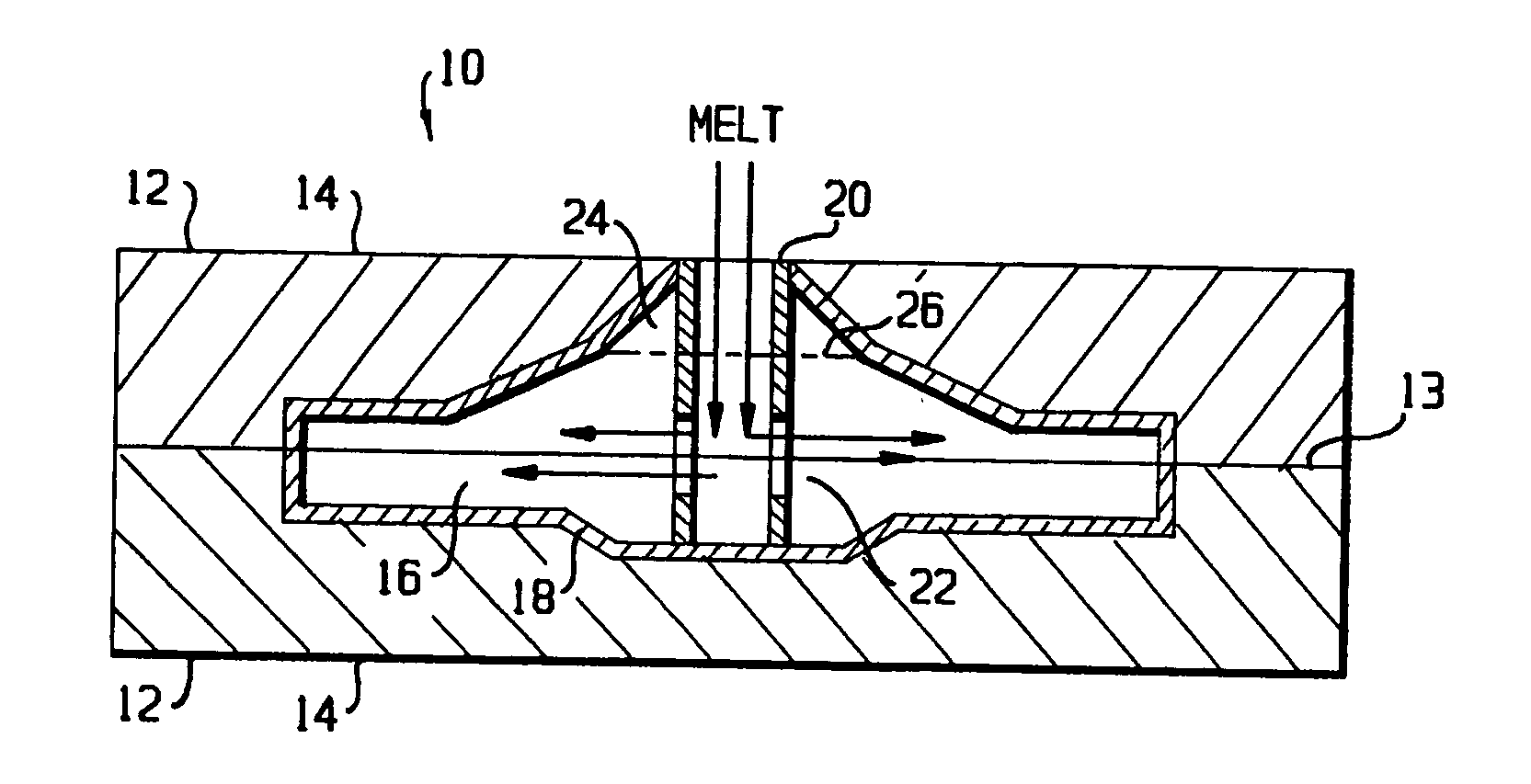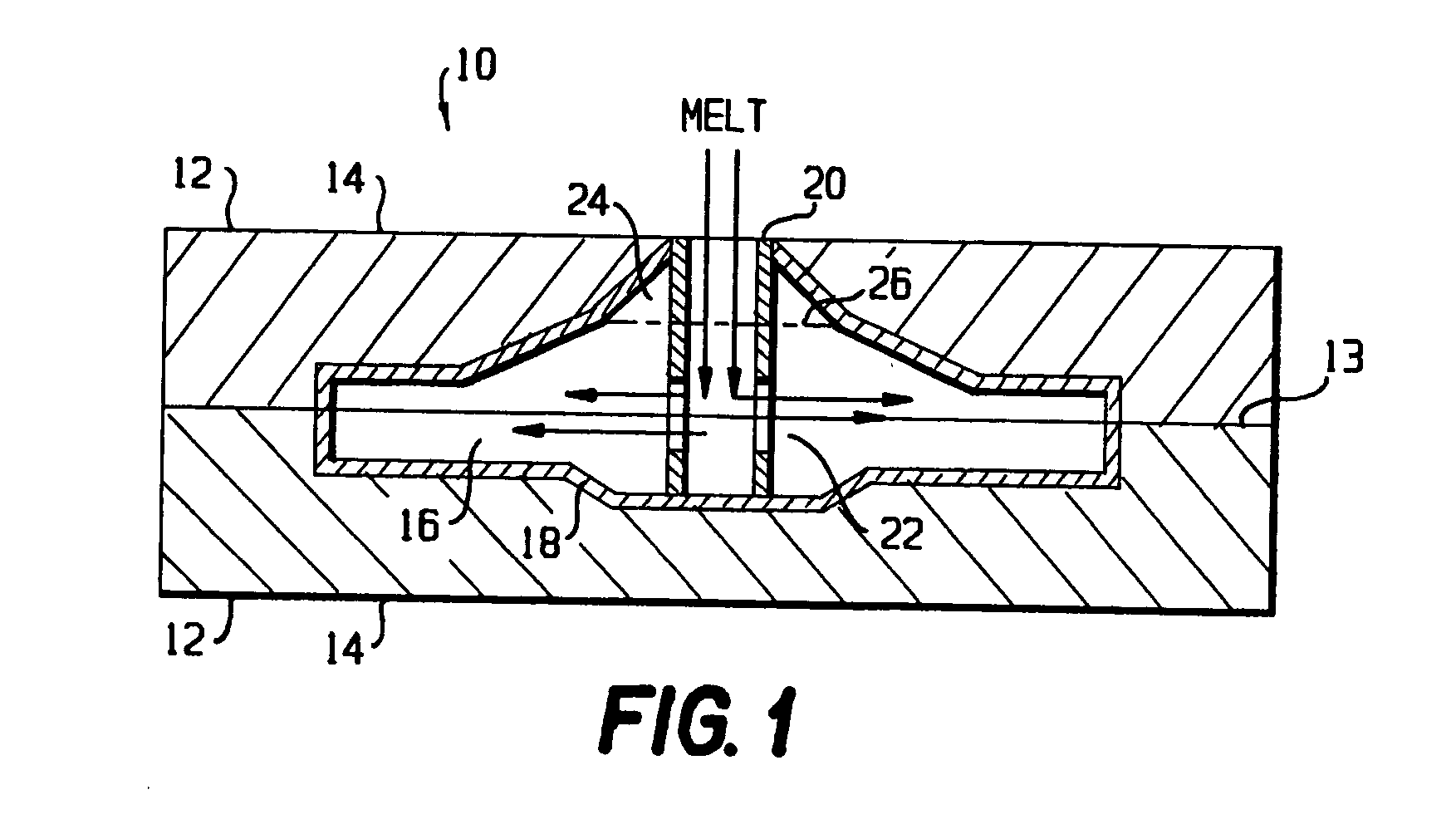Castings of metallic alloys with improved surface quality, structural integrity and mechanical properties fabricated in refractory metals and refractory metal carbides coated graphite molds under vacuum
a technology of refractory metal carbides and graphite, which is applied in the direction of manufacturing tools, foundry patterns, moulding apparatus, etc., can solve the problems of high production cost, high production cost, and high cost of metal die alterations,
- Summary
- Abstract
- Description
- Claims
- Application Information
AI Technical Summary
Benefits of technology
Problems solved by technology
Method used
Image
Examples
example 1
[0155] TABLE 3 lists various nickel, cobalt and iron base superalloys that are suitable candidates to be fabricated as castings with high integrity and quality under vacuum in isotropic graphite molds coated with refractory metals such as W or Re or refractory metal carbides such as TaC or HfC.
[0156] The molds for performing experiments according to the present invention are made with isostatically pressed isotropic graphite having a machined mold cavity coated with refractory metals such as W or Re or refractory metal carbides such as TaC or HfC. Some identical experiments are performed with molds made with extruded anisotropic graphite and similarly coated. The objective is to demonstrate the difference in the quality of castings made with different grades of graphite. The isotropic graphite and extruded graphite required for conducting the experiments can be procured, for example, from SGL Carbon Group. The coatings of refractory metals such as W or Re or refractory metal carbid...
example 2
Titanium and Titanium Aluminide Castings
[0166] The major use of titanium castings is in the aerospace, chemical and energy industries. The aerospace applications generally require high performance cast parts, while the chemical and energy industries primarily use large castings where corrosion resistance is a major consideration in design and material choice.
[0167] Titanium alloys and titanium aluminide alloys are induction melted in a water cooled copper crucible or yttrium oxide crucible and cast in high density isotropic graphite molds coated with refractory metals such as W or Re or refractory metal carbides such as TaC or HfC. The castings have high quality surface and precise dimensional tolerances free from casting defects such as a brittle alpha casing on the outer surface of the castings as well as inclusions. Furthermore, the hard coating of refractory metals such as W or Re or refractory metal carbides such as TaC or HfC prevents any reaction of molten titanium with the...
PUM
| Property | Measurement | Unit |
|---|---|---|
| thickness | aaaaa | aaaaa |
| thickness | aaaaa | aaaaa |
| thickness | aaaaa | aaaaa |
Abstract
Description
Claims
Application Information
 Login to View More
Login to View More - R&D
- Intellectual Property
- Life Sciences
- Materials
- Tech Scout
- Unparalleled Data Quality
- Higher Quality Content
- 60% Fewer Hallucinations
Browse by: Latest US Patents, China's latest patents, Technical Efficacy Thesaurus, Application Domain, Technology Topic, Popular Technical Reports.
© 2025 PatSnap. All rights reserved.Legal|Privacy policy|Modern Slavery Act Transparency Statement|Sitemap|About US| Contact US: help@patsnap.com


